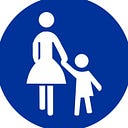Riding the Red Line
Yesterday, we threw the kids on the cargo bike, and biked on down to the Northwest African American Museum for the NAAM/MOHAI red line ride. It was an opportunity to talk to our 7 year old about redlining, racial restrictive covenants, exclusionary zoning, and open housing. It was an educational ride, through neighborhoods that have seen tremendous change over the last few decades, along the border of the red lined area of the Central District, as identified on the HOLC maps. One of the things the ride leader provided was a map showing the blocks where homeowners banded together to form racially restrictive covenants — overlaid on the HOLC map. I’d never seen the information presented this way — and it was an amazingly powerful graphic. There is a ton of information on the UW Civil Rights & Labor History project on these issues, and I highly suggest reading through it.
Many areas in the Central District, just blocks from downtown, are filled with missing middle housing — duplexes, apartments, and so on. We were riding up 19th just south of Cherry, and passed this really stunning three-floor wood-framed building. Most of the houses around it were single family houses or duplexes — but there were no other multifamily buildings over two stories. As with most of Seattle, these neighborhoods have also seen significant downzones over the last century. I surmised that this area had probably been downzoned to single family, and when I got home, started looking through historical zoning maps. I was not shocked to learn my assumption was correct.
The multifamily building is a condo today. It was built in 1905. It houses 7 units with an average unit size of 852 square feet — slightly smaller than the two bedroom ADU we live in. The building does not have an elevator — and has no parking. These types of buildings form the backbone of affordable housing in neighborhoods outside of the downtown core. But today — they’re largely illegal. The lot is 5,120 sf — and the building’s footprint is about 2,500 sf (a lot coverage under 50%)— giving it an estimated FAR of just under 1.5. Unit sizes vary from one to three bedrooms. The homes on either side, which were both built before the multifamily building, are both single family homes.
When this building was erected, multifamily buildings like this were legal throughout all of Seattle — and could co-exist with single family homes, as in the situation here. Eighteen years after it was built, though, Seattle passed its first Zoning Ordinance — which downzoned roughly half of the land where multifamily buildings were legal, to single family zoning.
In looking at the 1923 zoning map, this entire area was still zoned as Second Residence District (the diagonal hatch) — meaning multifamily buildings like this were still legal.
The 1943 zoning map shows that this area was still largely the same zoning — R2 is still Second Residence District — multifamily buildings were still legal.
By the early 1970s, however — this area was downzoned to RD-5000: residential duplexes — multifamily buildings like this one became existing, nonconforming structures — never to be legal again.
By the 1980s, Much of this area was downzoned from even allowing duplexes — to single family zoning. It was about this time that the movement to return to cities began to pick up. Single Family zoning is incredibly inflexible to change — and since 1980, Seattle’s population has grown by roughly 225,000 residents. The changes in the Central District have been dramatic. It’s hard not to think there is a connection between gentrification and the continued downzoning of Seattle’s neighborhoods. The century-long fight to prevent multifamily buildings from being near single family houses in the name of ‘preserving neighborhood character’ — especially in the face of growing inequality and a growing city, must be reversed. The multifamily building on this block didn’t ruin the character of the neighborhood — in fact it blends in really well. And more importantly, it provided (and provides) access to the neighborhood for those that couldn’t afford a large house on a large plot of land. And in a neighborhood of rapidly increasing home values, the multifamily building is considerably more affordable. Just last year, one of the units sold for less than a third of the houses on either side — which straddle the million dollar line.
